Project Jukebox Survey
Help us redesign the Project Jukebox website by taking a very short survey!
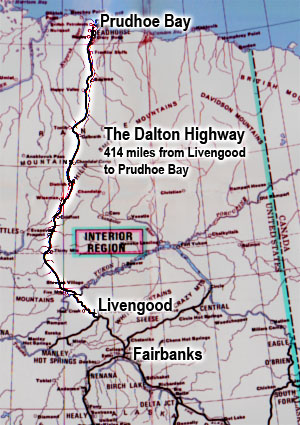
 The Dalton Highway: A Multi-Media History of Alaska's Arctic Road brings the history of the Dalton Highway to life with oral histories, photographs, documents, and maps.
The Dalton Highway: A Multi-Media History of Alaska's Arctic Road brings the history of the Dalton Highway to life with oral histories, photographs, documents, and maps.
The Dalton Highway, originally called the North Slope Haul Road, was constructed to deliver supplies to the oil industry after discovery of oil at Prudhoe Bay in 1968. Under a directive from Alaska's governor, W alter Hickel, a route initially was carved out from Livengood north to Sagwon as a temporary winter ice road. Known as the Hickel Highway, this project was abandoned due to environmental concerns about damage to the terrain and plans were made for a permanent and more environmentally sound transportation system. The road and accompanying Trans-Alaska Oil Pipeline that transported oil from Prudhoe Bay to the ice-free port of Valdez, Alaska, were completed in just three years and at that time it ranked as the largest privately financed construction project ever attempted and cost over $8 billion when completed.
alter Hickel, a route initially was carved out from Livengood north to Sagwon as a temporary winter ice road. Known as the Hickel Highway, this project was abandoned due to environmental concerns about damage to the terrain and plans were made for a permanent and more environmentally sound transportation system. The road and accompanying Trans-Alaska Oil Pipeline that transported oil from Prudhoe Bay to the ice-free port of Valdez, Alaska, were completed in just three years and at that time it ranked as the largest privately financed construction project ever attempted and cost over $8 billion when completed.
The Haul Road was turned over to the State of Alaska in 1981, and officially named the Dalton Highway, after James B. Dalton, a lifelong Alaskan and expert in arctic engineering. He supervised construction of the Distant Early Warning (DEW) Line and served as a consultant in early oil exploration efforts on the North Slope, including pioneering winter trails for transporting heavy equipment. The road was only open to commercial traffic until 1981, at which time the state then allowed public access to Disaster Creek (Mile 211). In 1994, the road was opened to private vehicles all the way to Deadhorse (Mile 415). Today, the Dalton Highway attracts visitors who want to explore the Brooks Range and the Arctic and travel into the wilderness north of Fairbanks. The Dalton Highway remains a primitive remote road with limited services.
Haul Road was turned over to the State of Alaska in 1981, and officially named the Dalton Highway, after James B. Dalton, a lifelong Alaskan and expert in arctic engineering. He supervised construction of the Distant Early Warning (DEW) Line and served as a consultant in early oil exploration efforts on the North Slope, including pioneering winter trails for transporting heavy equipment. The road was only open to commercial traffic until 1981, at which time the state then allowed public access to Disaster Creek (Mile 211). In 1994, the road was opened to private vehicles all the way to Deadhorse (Mile 415). Today, the Dalton Highway attracts visitors who want to explore the Brooks Range and the Arctic and travel into the wilderness north of Fairbanks. The Dalton Highway remains a primitive remote road with limited services.
This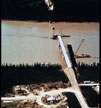 Dalton Highway Project Jukebox was funded by the National Park Service, and was a collaboration between individuals, community groups, public agencies, and UAF staff, faculty, and students. The oral history interviews were conducted by Marie Mitchell, William Schneider and Jessica Brooks in the fall and winter of 2006/2007. This Jukebox was originally designed and developed by Marie Mitchell, and completed in the summer of 2007 by Karen Brewster and William Schneider, all of the Project Jukebox office in the Alaska and Polar Regions Collections & Archives, Elmer E. Rasmuson Library, University of Alaska Fairbanks, with technical assistance from Naomi Huesmann. In 2021, the HTML version of the Dalton Highway Project Jukebox was upgraded to Drupal. The information in this project reflects the context of the original creation date. Some information may now be out of date.
Dalton Highway Project Jukebox was funded by the National Park Service, and was a collaboration between individuals, community groups, public agencies, and UAF staff, faculty, and students. The oral history interviews were conducted by Marie Mitchell, William Schneider and Jessica Brooks in the fall and winter of 2006/2007. This Jukebox was originally designed and developed by Marie Mitchell, and completed in the summer of 2007 by Karen Brewster and William Schneider, all of the Project Jukebox office in the Alaska and Polar Regions Collections & Archives, Elmer E. Rasmuson Library, University of Alaska Fairbanks, with technical assistance from Naomi Huesmann. In 2021, the HTML version of the Dalton Highway Project Jukebox was upgraded to Drupal. The information in this project reflects the context of the original creation date. Some information may now be out of date.
People
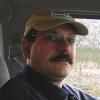 |
Michael Abels |
Originally from New Jersey, Michael Abels came to Alaska in 1975 to study natural resource management at the University of Alaska Fairbanks (UAF). He worked as a student employee for Joe Nava at the animal care facility on campus and eventually shifted to work at the Toolik Lake Research Station, which is located at Toolik Lake at Mile 284.5of the Dalton Highway. The Toolik Lake Research Station was established in 1975 at the site of the former Toolik Camp road construction camp to support... Read More |
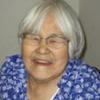 |
Jennie Ahkivgak |
Jennie Ahkivgak was an Iñupiaq elder born in 1926 to Etta and William Ekolook on Flaxman Island, Alaska She grew up along the Beaufort Sea Coast near Prudhoe Bay and on the Qalġusiḷik River, and as an adult moved to Utqiaġvik, Alaska (formerly known as Barrow). She remembers living a traditional subsistence lifestyle in the Kuparak, Sagavanirktok River, and Prudhoe Bay area before there was oil development and how the family moved around depending on the season. Jennie married Herbert... Read More |
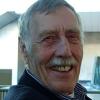 |
Oliver Backlund |
Originally from Holt, Minnesota, Oliver Backlund came to Alaska in 1949 to work for the Public Roads Administration (PRA), a federal agency that constructed roads and bridges, did work in national parks and forests, and later became the Bureau of Public Roads. Oliver served in the Navy during World War II and was discharged in 1946. He studied forestry at the University of Minnesota for one year and then moved to Alaska. He worked for the PRA from February 1949 to 1951, and was hired by the... Read More |
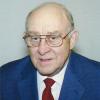 |
Bruce Campbell |
Originally from Binghamton, New York, Bruce Campbell came to Alaska in June 1952, fresh out of Union College with a bachelor's degree in civil engineering, and went to work for the Alaska Road Commission (ARC). ARC was part of the U.S. Department of Interior, and when the Interstate Act passed in 1956, the ARC changed to the Bureau of Public Roads (BPR). In 1959, when Alaska became a state, BPR changed to the Alaska Department of Highways, and over the years Bruce worked for the State of... Read More |
 |
Brett Carlson |
Brett Carlson was born and raised in Fairbanks, Alaska and studied economics and accounting in Delaware. During the summers, he worked as a tour guide for the Alaska Railroad and for Northern Alaska Tour Company trips along the Dalton Highway. After he graduated from college, he gained permanent employment with Northern Alaska Tour Company, and in 2001, he started working year round for them in Coldfoot, Alaska. Coldfoot is a former mining camp, that became a construction camp when the Haul... Read More |
 |
John Cook |
John Paul Cook was born in 1938 in Paris, France. His mother, Audrey Gilman Ames, worked for the Paris Herald Tribune newspaper, and his father, John Joseph Cook, was an airplane mechanic in the U.S. Army Air Corps attached to the American Embassy. John relocated to the United States when he was one or two years old, and was raised by his aunt and uncle in Florida, and by his grandparents in Washington. By the time John was eight years old, the family lived in Maryland, and he spent a lot of... Read More |
 |
Earl Finkler |
Originally from Wisconsin, Earl Finkler came to Alaska in the late 1960s to work in community development and planning. He has a Bachelors Degree in Journalism from Marquette University and a Masters Degree in Urban Affairs from the University of Wisconsin Milwaukee. He first worked in Anchorage for the State Housing Authority assisting rural communities with HUD 701 plans (comprehensive plans for community development). The first community he was involved with was Barrow (now Utqiaġvik).... Read More |
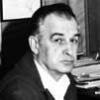 |
Woodrow "Woody" Johansen |
Woodrow "Woody" Johansen was born in 1919 in Eyak, Alaska (now known as Cordova), and was valedictorian of his 1932 high school graduating class in Cordova, Alaska. As a young man, he worked as as a welder for the Copper River and Northwestern Railroad, and by watching engineers drive the touring rail cars, he decided to become a railroad engineer. He attended the University of Alaska Fairbanks (UAF) from 1933 to 1940, earning a degree in civil engineering. But when he graduated, there were... Read More |
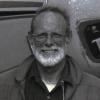 |
Michael "Mike" Kunz |
Born in Texas and growing up in upstate New York, Michael "Mike" Kunz came to Alaska in 1970 to work for John Cook on the Healy Lake archeological site. He earned a bachelor's degree in anthropology from Eastern New Mexico University, where he became interested in archeology and gained field experience at a type site for the Clovis culture, and was a graduate student at Washington State University. When John Cook became the project manager for the Trans-Alaska Pipeline archeology project, he... Read More |
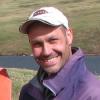 |
Robin Mills |
Born in Manchester, England, Robin Mills grew up in Canada and New York state. From an early age, he was interested in artifacts and archeology. He earned a bachelor's degree from Boston University in 1989, and moved to Alaska shortly thereafter to attend graduate school at the University of Alaska Fairbanks (UAF). He completed his master's degree in archeology in 1992 and his Ph.D in 1998. As a student, he worked for various federal agencies and the private contracting firm of Northern Land... Read More |
 |
Rodger Murray |
Rodger Murray was born and raised in Fairbanks, Alaska. In 1981, he began his career with Sourdough Express, a commercial freight service based in Fairbanks, first as a truck washer, then as a truck driver on the Dalton Highway (Haul Road), and then doing dispatch work out of the main office in Fairbanks. |
 |
Dennis Nottingham |
Originally from Montana, Dennis Nottingham came to Alaska in 1962. He grew up in a family of ranchers, builders, and inventors and began his construction and engineering career early in life by building a wide variety of small projects utilizing concrete, masonry, timber and steel. He graduated from Montana State College (now Montana State University) in 1960 with a M.S. in civil engineering (combined structures and geotechnical), and was employed by the Montana Highway Department Bridge... Read More |
 |
Theresa O'Kelley |
Theresa O'Kelley is from Fairbanks, Alaska. In 1981, the began her career with Sourdough Express, a commercial freight service based in Fairbanks, and has spent many years working in the office and as a dispatcher. |
 |
Jack Reakoff |
Jack Reakoff was born in 1957 in Anchorage, Alaska and came to Wiseman, Alaska as a boy in 1971 with his parents Rick and June Reakoff and his sisters, Heidi and Missy. Jack has been living there on and off since, and by so doing has become one of the longest-term residents of Wiseman. Jack lives a subsistence-based lifestyle focused on hunting, trapping, berry picking, and gardening. He has worked as a trapper, hunting guide, commercial fisherman, and tour guide. With an interest in history... Read More |
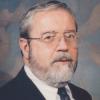 |
James W. "Jim" Rooney |
James W. "Jim" Rooney was born in Michigan, and raised in the Detroit area. He has been involved with Alaska engineering and construction projects ranging from highways, airports, water and sewer systems, marine facilities, fish hatcheries, the Trans-Alaska Pipeline System (TAPS), and the Alaska Northwest Natural Gas Transmission System route studies. He earned an undergraduate degree in civil engineering and a masters in geotechnical engineering, both from Wayne State University. He came to... Read More |
 |
Heidi Schoppenhorst |
Born in Anchorage, Alaska, Heidi Schoppenhorst moved to Wiseman, Alaska in 1971 with her parents, Rick and June Reakoff, and her brother, Jack, and sister, Missy. She was home schooled and grew up living a subsistence lifestyle based upon hunting, fishing, trapping and gathering. When they first moved to Wiseman, the Dalton Highway had not yet been built, so the only way to access the community was by airplane. Her father was a hunting guide and pilot so they also lived at Chandalar Lake,... Read More |
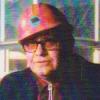 |
Hesden Scougal |
Hesden Scougal was born in 1921 in Shell Rock, Iowa to Opal and Alexander Scougal. As a boy, he worked as an apprentice at his father's newspaper business and learned typesetting. In 1940, Hesden joined the U.S. Marine Corps and served in China and on the aircraft carrier, USS Lexington. After a medical discharge in 1942, he worked as a carpenter apprentice for Lytle & Green Construction in Iowa. In Januay 1943, he was transferred to Fairbanks, Alaska where he worked on building... Read More |
 |
Harold Tilleson |
Harold "Hal" Tilleson was born in Fairbanks, Alaska in 1935 and grew up in a family that mined at remote locations in Alaska from 1937 to 1953, including at Long Creek near Ruby, Alaska. His stepfather, Hans Tilleson, owned the Long Creek Mining Company. Harold starting mining when he was ten years old and learned to operate large machinery like a D8 Caterpillar. When mining closed down during World War II, the family moved to Arlington, Washington and bought a farm. Harold was schooled in... Read More |
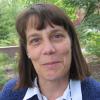 |
Susan "Sue" Will |
Originally from Bismark, North Dakota, Susan "Sue" Will came to Alaska in 1973 to attend the University of Alaska Fairbanks (UAF). Her grandfather, George F. Will, was a well-known archeologist and historian, and at a very young age, she became interested in history, the outdoors, and archeology. Sue earned her bachelor's degree in archeology at UAF and her first Alaskan archeological fieldwork was in 1973 at Dry Creek, as part of the archeology survey and excavation project for the Trans-... Read More |


